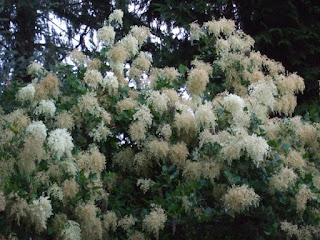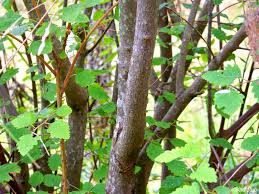OAK –Quercus Alba, Quercus Tinctoria, Quercus Rubra, Quercus Robur, Quercus Cortex, Quercus Petraea, etc.
Also known as:White oak, English oak, Red oak, Black oak, Durmast oak, Common oak, Cups and Ladles, Hu (Chinese), Tanner’s Bark, Jove’s Nuts, Mast Pipes, etc.
Parts used: bark (both inner and outer), leaves, gall (the small knobs on the branches), acorns
Systems/organs affected: spleen, intestines, stomach, skin, venous system, mucous membranes
Properties: astringent, hemostatic, antiseptic, tonic, anthelmintic, diuretic, febrifuge, anti-emetic, anti-venomous, anodyne, emmenogogue, anti-carcinogenic, anti-scrofulous, depurative, antibacterial, demulcent (oil), expectorant, anti-inflammatory
OAK is a member of the Fagaceae (comprises both Beech and Oak trees) family. There are over 200 species located throughout the globe. The white oak is native to England and North America and can get up to 150 feet tall. The trunk of an oak can get up to 8 feet in diameter. White oak has gray bark and leaves that have finger like shaped lobes. Oak leaves vary in shape depending on the variety. They can be ovate to maple leaf shaped. The leave alternate and are a lovely bright shade of green. Oak trees are monoecious which means they produce both male and female flowers. The female flowers are tiny and greenish brown in color. They look similar to acorns but are found by themselves in the leaf axils on the new growth of the tree. The flower is formed inside a cup of sepals that later turn into the actual acorn’s cap. Acorns generally fall from the tree between September and October at which point they can be gathered and processed for storage. (Acorns can be toxic unless leeched first of their tannin content).
The oak has many interesting stories attached to it. ‘Quer’ comes from the Celtic language which means ‘handsome’ and the ‘cuez’ means ‘tree’. The Greeks dedicated it to Zues, the Romans to Jupiter and the Druids referred to it as the Celestial Tree. The Hebrews considered it to be a sacred plant and the Teutonic tribes called it the Tree of Life and believed it to be the sacred tree of Thor. The Irish believed it to be the sacred tree of Dagda (the Father of All) and many ancient tribes believed that man was made from the oak and it was considered the first tree created by God. The acorn was a symbol of immortality and fertility to the Nordic people and was a staple in their diet.
Oak is one of the Bach Flower essences. It is for those that tend towards pigheadedness, a compulsion to be self-sacrificing and obligatory, as well as ambitious and unyielding or uncompromising in nature. It is used to treat obsessiveness, long term stress and obstinancy.
This tree is interesting because it creates a lichen/moss (as do many trees) that has an oil produced from it that can be used medicinally. The Latin for oak moss is Evernia Prunastri (so when you look it up you know what to look for) and it is mainly extracted in France with the usa and Bulgaria being the only other extractors. Oak moss resembles a green ,wet sludge and its oil is rather thick. (You need to warm it each time you use it to get it to come out of the bottle). The oil has plenty of medicinal components just as the tree does. It has been used for soothing the digestive system, nervous system and brain, for sepsis, as an expectorant to rid the body of excess phlegm and to diminish damage to the body by poor habits, the aging process and environmental toxins. (Sounds like we all need this on the shelf these days). It is used in a host of skin care products and cosmetics. The oil pairs well with lavender, patchouli, cypress, neroli and geranium.
Oak has been used medicinally it seems since time began. Native American tribes have used it for diarrhea, dysentery, tumors, bleeding, swelling and fevers. (It is considered to be a quinine substitute). The powdered root was made into a sort of snuff for tuberculosis. (This is the only time I ever found a reference to using the root of the oak tree for something…normally they never would do that as it kills the tree). The bark was decocted and used for sore throats as a gargle, for skin sores and to help rid the body of parasites. The leaves were used topically for varicose veins, to promote wound healing and to stop bleeding. The Europeans used it as an antidote to strychnine (a poisonous substance made from nux vomica and related plants and used occasionally as a stimulant), veratrine (a poisonous substance made from the lily family and used to relieve rheumatism and neuralgia), cadmium, lead, paraquat (an herbicide), etc. It was listed until 1916 in the US Pharmacopoeia (who knows WHY they ever STOPPED listing it or a number of other remedies) and was approved by the German Commission E to be used for diarrhea. It has been used for a host of health complaints such as hemorrhoids, cardiovascular issues, ringworm, menstrual issues, hypertension, vomiting, goiter, kidney and gallstones, high cholesterol, prolapsed uterus and/or anus, boils, chronic mucus discharge, poison ivy, varicose veins, burns, canker sores and oh so much more.
Aside from its medical uses (which are many), oak trees produce acorns which are considered a food by many native tribes. However, the plant is extremely high in tannins so the nuts must go through a leeching process before one can ingest them. There are a number of ways one can accomplish this. Some native tribes would bury the acorns in a swampy area and then dig them up a year later (500 pounds of acorns would be a year supply for a family). The constant flow of water around the acorns would remove the tannins. Sometimes the acorns were shelled and then wrapped in a burlap bag and submerged overnight in a river for the same effect. Some indian tribes would shell the acorns and grind them into meal, wrap the meal in burlap and them place it into a depression tamped into the sandy edge of a river or stream. Hot and cold water would then be poured over it most of the day, washing away the tannins. The meal/mush was then taken and dried to be used as flour or eaten as it was. The flour should be mixed with other flours for baking as too much of it can make one sick. Perhaps the easiest method for leeching the nuts today is by boiling them, although that causes them to lose oil and flavor. Shell them, put them in water and bring them to a boil. Every time the water turns brown change it out with fresh water and start the process again. Do this until the water no longer turns brown (it may take 45 minutes or so). Drain them and dry them for storage, etc. They can be used in soups, bread, grits, muffins, etc.
Dr. Christopher used oak bark for many things. He tells of an 18 month old baby that had thrush so bad you could smell it across the room. He made and oak bark decoction and used an atomizer to spray it into the baby’s mouth (the child’s lips were swollen as was the tongue and it had white sores all over its mouth). He would tip the baby over so the liquid wouldn’t run out of its mouth. He did this several times as the poor kid could only swallow small amounts. Dr. Christopher told the parents to only give him the oak bark decoction and red raspberry leaf tea until he was healed. He called on the family the next day to find the child happy and appearing more normal. The sores in his mouth were healing and his lips and tongue were a nice pink once more. He used it to great affect for varicose veins, gingivitis, hemorrhoids and a number of other maladies. Jethro Kloss said that acorn powder made into tea helps to counter the poison for venomous bites. He also said that the tea from the leaves was excellent for the kidneys, spleen, liver and for goiter.
Oak contains quercin-a substance similar to salicin and vitamin P (bioflavonoids), and has a strong effect on capillaries and veins. (No doubt the reason it works so amazingly well for venous conditions). Oak bark also contains a hefty amount of vital nutrients such as manganese, cobalt, calcium, phosphorus, potassium, magnesium, iron, sulfur, sodium and vitamin B-12. The wood has been valued for ages to make ships, furniture, houses, churches and more. The bark tanned leather for shoes and saddles and was used for dyes. The wood also supplied charcoal, fuel and hiding spots for birds, insects, kings (Charles II) and outlaws (Robin Hood). It can live to be over 450 years old.
WebMD had no information in regards to interactions with medications. They did say that people with heart conditions, nerve conditions, skin conditions, kidney and/or liver issues or those who have fevers or infections should probably not use oak. (Made me laugh out loud as they always have a long list of people who should avoid the things that might help them). They also say pregnant and nursing women should not use this either as it can stimulate menstruation. Consult a physician before starting any herbal product or regimen.
As is customary with my posts I am including some links for your perusal. Use them wisely and stay strong and healthy!
https://www.amazon.com/Herb-Pharm-White-Oak-Extract/dp/B0016B5V92/ref=sr_1_1_a_it?ie=UTF8&qid=1475182835&sr=8-1&keywords=oak+herb
https://www.amazon.com/White-Oak-Bark-Tea-Organic/dp/B00DLNC8JY/ref=sr_1_3_a_it?ie=UTF8&qid=1475182835&sr=8-3&keywords=oak+herb
https://www.amazon.com/Toothpaste-Forest-Balsam-Extracts-Broth/dp/B00WPRBHF8/ref=sr_1_7_a_it?ie=UTF8&qid=1475182835&sr=8-7&keywords=oak+herb
https://www.amazon.com/Dandruff-Sensitive-Wormwood-Natura-Siberica/dp/B006F3ZW36/ref=sr_1_14_a_it?ie=UTF8&qid=1475182835&sr=8-14&keywords=oak+herb
https://www.amazon.com/White-Oak-Bark-Quercus-Smallflower/dp/B0006NZALU/ref=sr_1_15_a_it?ie=UTF8&qid=1475182835&sr=8-15&keywords=oak+herb
https://www.amazon.com/Christophers-Original-Formulas-Herbal-Powder/dp/B000I4C074/ref=sr_1_29_a_it?ie=UTF8&qid=1475183287&sr=8-29&keywords=oak%2Bherb&th=1
https://www.amazon.com/Bach-Original-Flower-Remedies-20ml/dp/B000NTGYTY/ref=sr_1_2_a_it?ie=UTF8&qid=1475183431&sr=8-2&keywords=oak+bach+flower+essence
http://www.theoilshop.com/product/Oakmoss%20-Absolute



















































